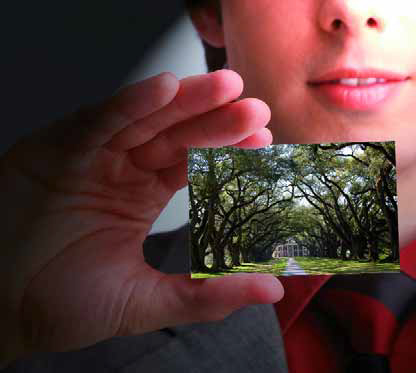ARTICLES
Advance Search
Aquatic Health
Aquatic Health, Fitness & Safety
Around the Internet
Aquatic Culture
Aquatic Technology
Artful Endeavors
Celebrity Corner
Life Aquatic
Must-See Watershapes
People with Cameras
Watershapes in the Headlines
Art/Architectural History
Book & Media Reviews
Commentaries, Interviews & Profiles
Concrete Science
Environment
Fountains
Geotechnical
Join the Dialogue
Landscape, Plants, Hardscape & Decks
Lighter Side
Ripples
Test Your Knowledge
The Aquatic Quiz
Other Waterfeatures (from birdbaths to lakes)
Outdoor Living, Fire Features, Amenities & Lighting
Plants
Ponds, Streams & Waterfalls
Pools & Spas
Professional Watershaping
Structures (Editor's Notes)
Travelogues & History
Water Chemistry
WaterShapes TV
WaterShapes World Blog
Web Links
Around the Internet
Aquatic Culture
Aquatic Technology
Artful Endeavors
Celebrity Corner
Life Aquatic
Must-See Watershapes
People with Cameras
Watershapes in the Headlines
Although my practice primarily encompasses residential landscapes, I occasionally tackle a commercial project. In one such case, I was recently asked to design the entry planting and make recommendations for the hardscape at the Riviera Country Club in Pacific Palisades, Calif. One of the most prestigious golf courses in the world, Riviera is the regular host to the Nissan Open, one of the sport's premier tournaments. It's a high-profile site in every conceivable way, so image is everything to the facility's owner and managers. After many years of placing what were essentially band-aids on the entry's landscape, they decided it was time for a complete overhaul and a
It might be something of a cliché, but it's often said that there's great wisdom in being willing and able to learn the lessons of history. In that spirit, I recently took advantage of an opportunity to sit in on a class in the
A well-conceived garden that has endured through many decades can teach us all a multitude of lessons. In the case of the Virginia Robinson Gardens, however, even getting to the point where those lessons might be recognized and appreciated has taken years of research, study and painstaking restoration. In the nine years I've been associated with the gardens, I've done all I can to determine the original design intent of those who owned and established it, stripping away generations of alterations, additions and miscalculations while interpreting the site and uncovering clues that point to the sense of mission and the creative spirit that influenced its creation and further development early in the 20th Century. I've done so with a recognition that the Virginia Robinson Gardens are important as an emblem of southern California history and an era gone by. I've also come to perceive the complexity, artistry and beauty of the space, seeing it as a blueprint that, examined closely, can serve to inspire and inform the work we all do today. The current gardens occupy most of the grounds of the former estate of Harry and Virginia Robinson, heirs to a department store fortune. My charge has been to restore and manage these six-and-a-half acres in the heart of Beverly Hills, Calif. - a graceful setting in the midst of
Garden historians tell us there is evidence that pergolas and other shade structures were common features of Egyptian, Greek and Roman exteriors. They further suggest that they were normally situated on north sides of residences and were covered with grape vines or matting. Not much has changed through the centuries, although these structures are now found in all directions around homes and as free-standing features in residential designs around the globe. In modern times, these structures are used for almost every conceivable purpose - dining, cooking, fireside relaxation, parties, weddings, photo shoots and, most important, spending time with friends and family. They offer welcome retreats to those wishing to enjoy outdoor spaces on hot days and are increasingly becoming focuses of activity even in the middle of
A rainstorm is a good thing: It gives us water, fills our lakes and streams, feeds our crops and landscapes and arguably makes our way of life possible. But if there's too much of that good thing, it can also irreparably damage homes, roadways, curb and gutter, crops, landscapes and other elements of the environment, particularly when we've altered the topography to suit our own purposes. The importance of erosion control and the need for including it in any land-altering project has been underscored through the years by numerous disasters, including landslides that have resulted in property destruction and even
The goal of a landscape design is to complement a beautifully appointed home with hardscape, plants and other outdoor amenities. Once construction begins, however, reality sets in for many clients and they begin making trade-offs to trim costs and manage the project's bottom line. Most often, cuts like these take their toll on project elements that swing into place toward the end of a project, where the most significant costs tend to be related to larger plants and landscape lighting. Smaller plants can
An important and complex factor in any business is the daily paperwork required to function properly. A couple of years ago I decided to bring all the paperwork, forms and filing practices for our business up to legal speed, so I enrolled in a class on Mechanic's Lien laws and processes. The class was run by a law firm, and the first thing they said was that everyone is intimidated by forms and make it all too complicated. They advised us to
Done properly, planting design is much like painting: It involves setting frames, backgrounds, screens and stages in a garden, thus creating a living scene with the plants as features of the composition. Just as a painter adds layers of colors to a canvas to create a work of art, the garden designer combines plants for visual delight. But the garden designer has an advantage in that scent, texture, motion and even taste can be experienced in gardens in ways that can only be suggested by a painting. (As a former painter, I can attest to this point and credit my artistic adventures in
Beauty enhances our lives by changing our perceptions, and what we do as landscape professionals plays an important part in setting that perceptual stage. As the mystic poet Rumi wrote in the 13th Century, "Beauty surrounds us, but usually we need to be walking in a garden to know it." The steps we take in moving to and from our homes are important in that context, both for us and for our clients: These daily treads affect our perception of the world and influence our moods. While we can't always change the part of the journey that continues beyond the garden gate, we can do much to shape the sense of welcome, beauty and ease by






















